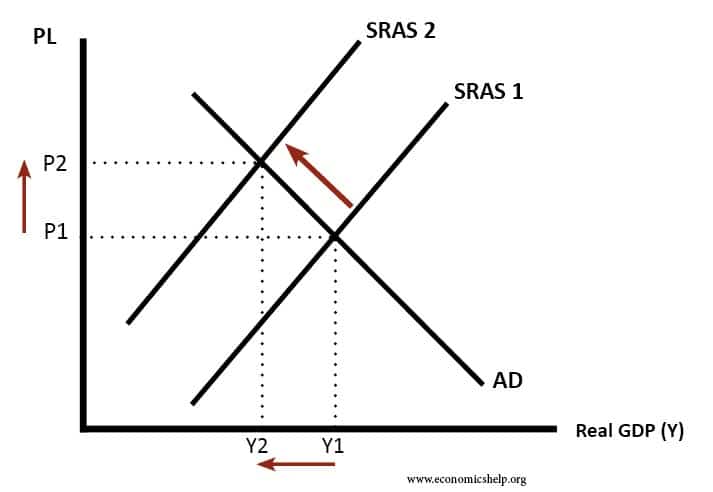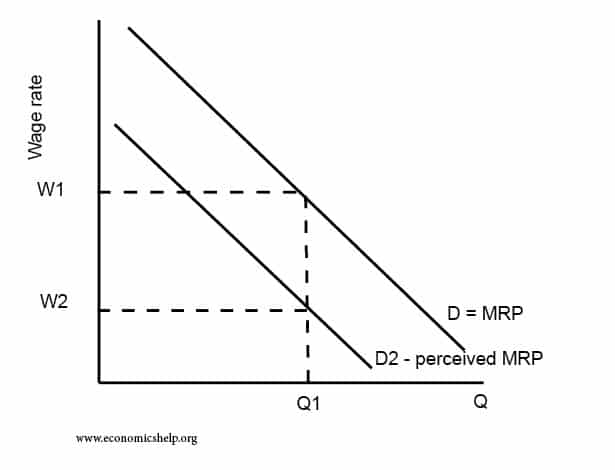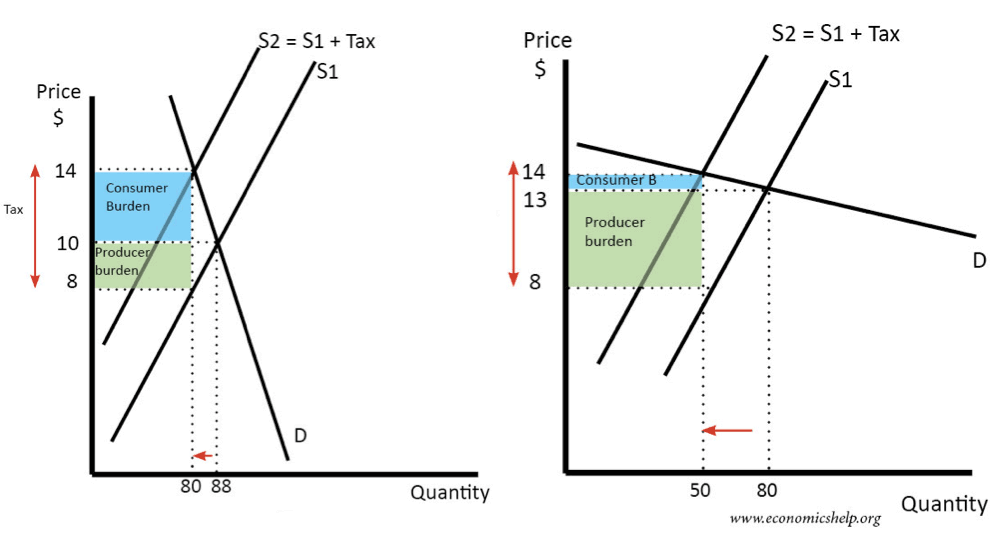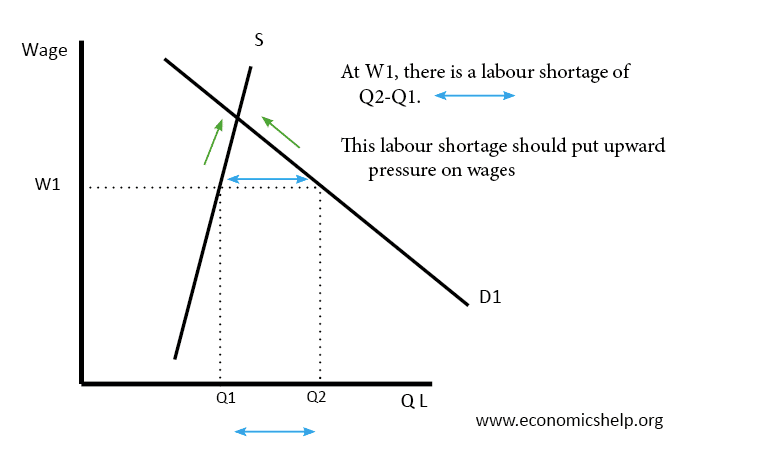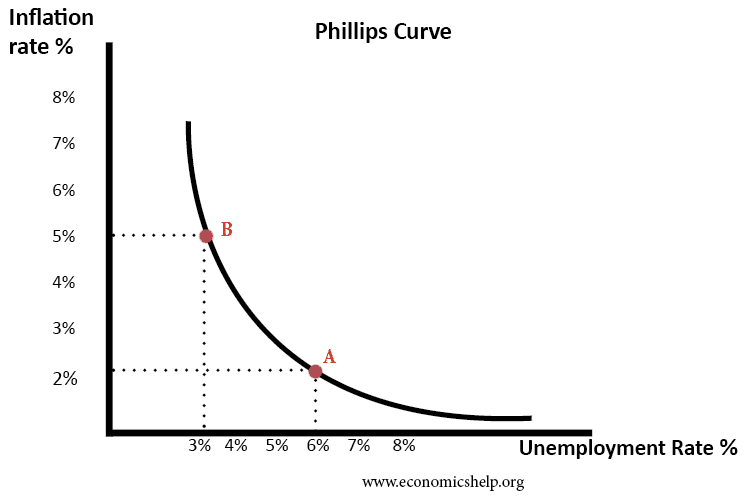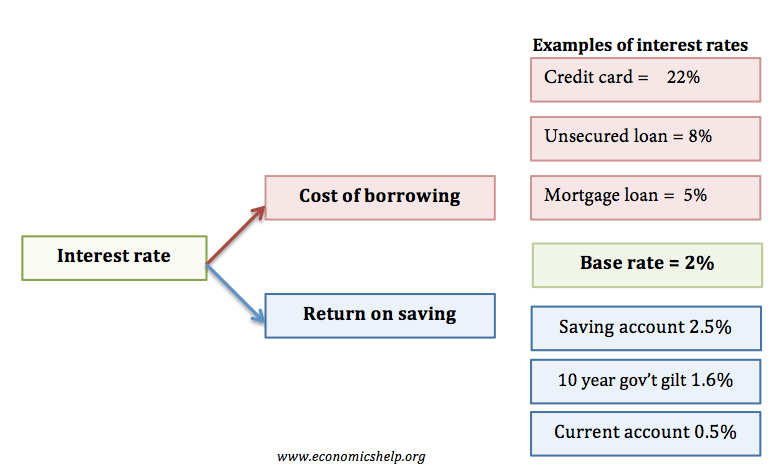Real Wage Unemployment
Definition: Real wage unemployment occurs when wages are set above the equilibrium level causing the supply of labour to be greater than demand. Classical unemployment of Q1-Q2 caused by a wage NMW above the equilibrium. Classical economists argue the solution is to cut wages to reduce unemployment. For example, a fall in demand for labour …

